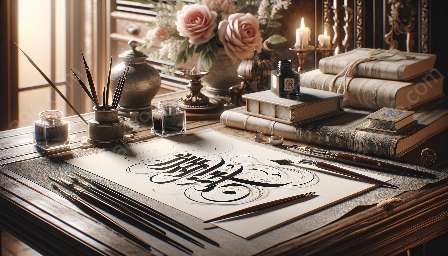Calligraphy is an art form that has transcended time, evolving into various styles and methods across different cultures. Within the realm of calligraphy, illuminated calligraphy stands out as a particularly captivating and unique form of artistic expression. This article delves into the challenges and opportunities inherent in illuminated calligraphy, shedding light on its historical significance, modern applications, techniques, tools, and artistic expression.
The Historical Significance of Illuminated Calligraphy
Illuminated calligraphy has a rich historical heritage, dating back to the medieval and renaissance periods. During this time, scribes and artists meticulously adorned manuscripts with intricate, ornate lettering and decorative elements. These embellishments often included gold leaf, vibrant pigments, and detailed illustrations, adding depth and splendor to the written word.
The process of creating illuminated manuscripts was painstaking and labor-intensive, requiring exceptional skill and attention to detail. Scribes and artists faced the challenge of harmonizing the textual content with the visual embellishments, ensuring a seamless integration that enhanced the overall aesthetic and narrative impact of the work.
Modern Applications and Revival of Illuminated Calligraphy
While the tradition of producing illuminated manuscripts has evolved, illuminated calligraphy continues to captivate contemporary artists and enthusiasts. The revival of this art form has presented exciting opportunities for calligraphers to fuse traditional techniques with modern influences, creating visually stunning compositions that resonate with audiences and collectors.
One major opportunity in the modern era is the integration of illuminated calligraphy into various forms of visual art, such as book illustration, fine art, graphic design, and digital media. The marriage of traditional calligraphic expertise with digital tools opens new avenues for creative expression and collaboration.
Techniques and Challenges in Illuminated Calligraphy
Illuminated calligraphy demands a mastery of both calligraphic skills and artistic techniques. Calligraphers embarking on illuminated projects face the challenge of balancing the intricacies of lettering with the composition and execution of decorative elements.
The choice of materials also presents challenges, as artists seek high-quality parchment, inks, pigments, and gold leaf to honor the tradition of illuminated manuscripts. Techniques such as gilding, intricate flourishes, and delicate line work require patience and precision, posing challenges that test the dedication and skill of the artist.
- Tools of the Trade
- Artistic Expression in Illuminated Calligraphy
- Opportunities for Collaboration and Exhibition
As modern practitioners of illuminated calligraphy explore these challenges, they find numerous opportunities for growth and mastery. The pursuit of excellence in this art form fosters a deep appreciation for the historical context and artistic heritage of illuminated calligraphy.

